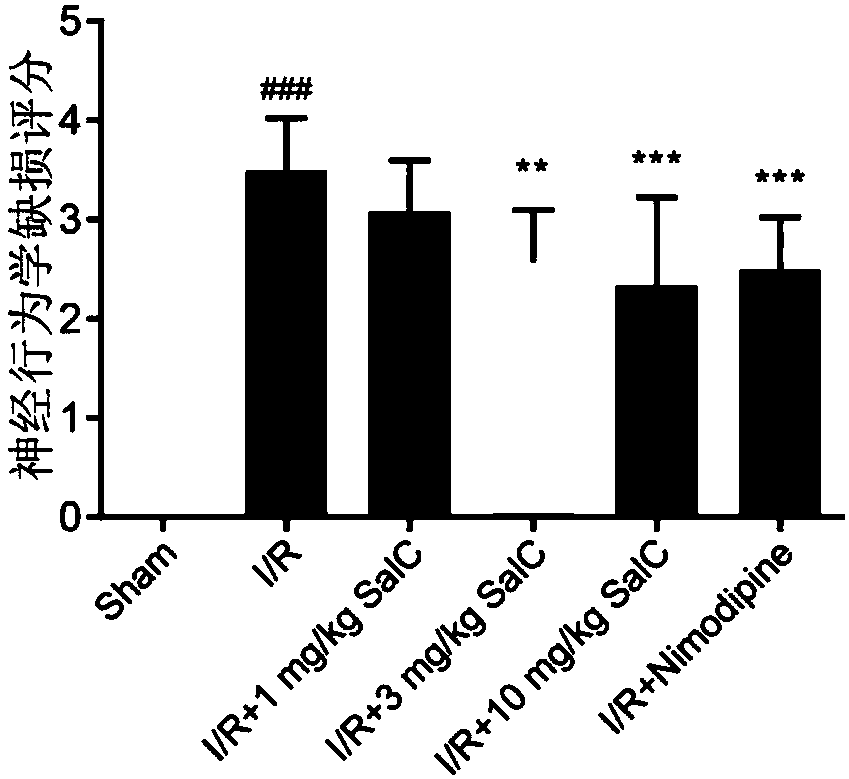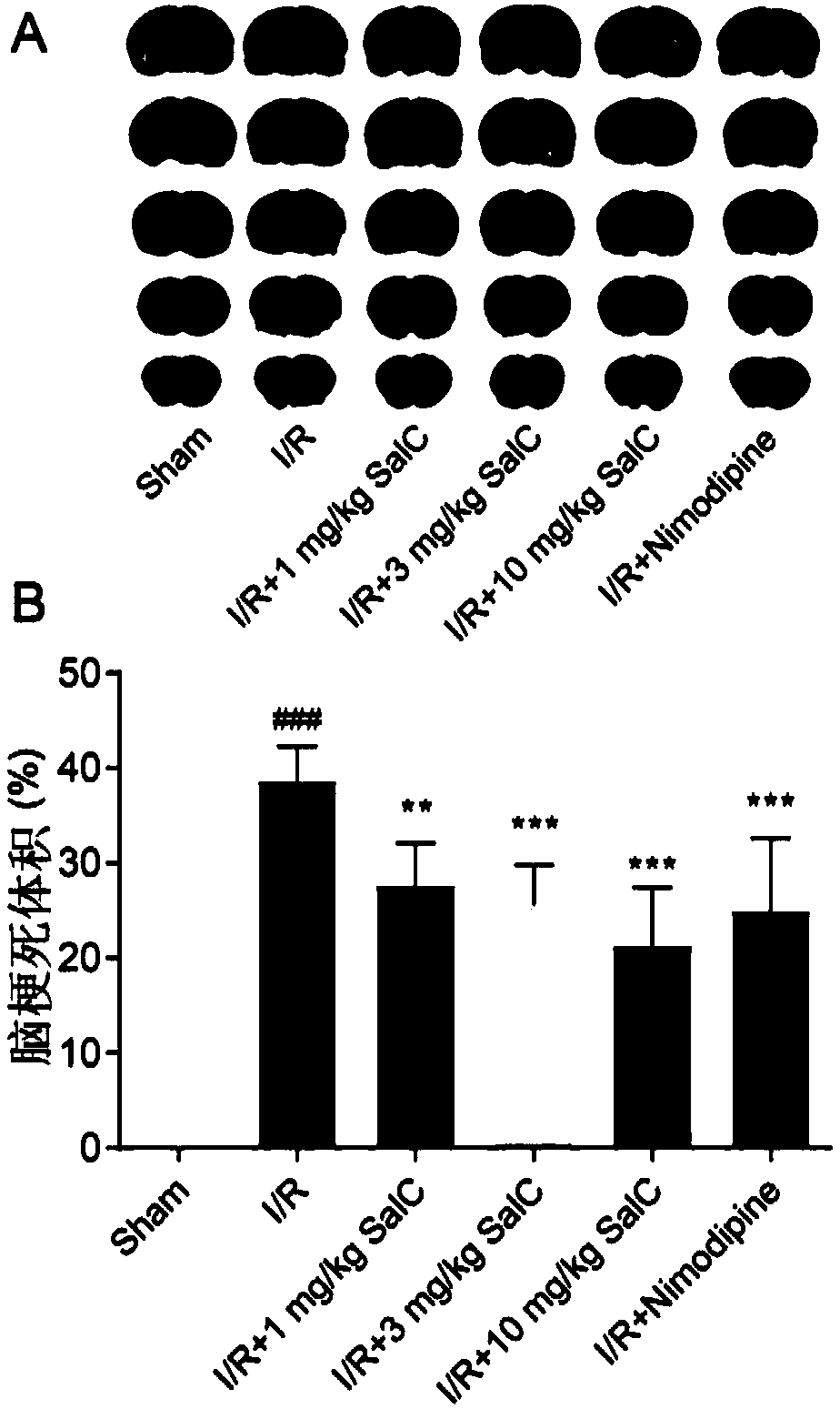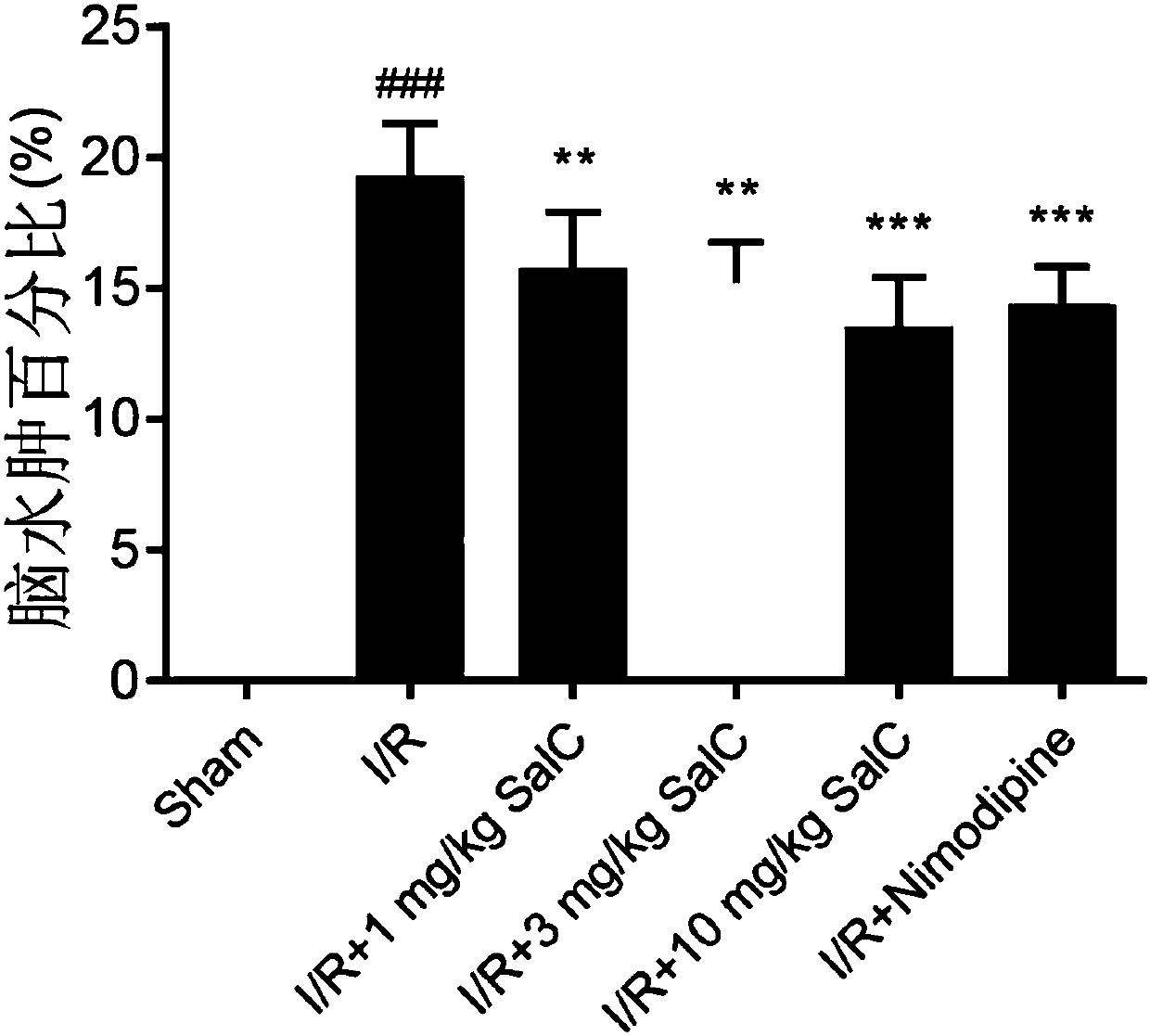Application of salvianolic acid C in preparing anti-stroke drug
A salvianolic acid and drug technology, applied in the field of medicine, can solve problems such as no report on the effect of salvianolic acid C, no report on the pharmacological effect of salvianolic acid C against stroke, etc., so as to reduce the apoptosis of nerve cells and improve the Symptoms of behavioral deficits and the effect of improving nerve cell viability
- Summary
- Abstract
- Description
- Claims
- Application Information
AI Technical Summary
Problems solved by technology
Method used
Image
Examples
Embodiment 1
[0040] Example 1: Effect of salvianolic acid C on neurobehavioral deficit symptoms in rats with cerebral ischemia-reperfusion
[0041] Experimental materials: SPF grade male SD rats, weighing 240-260 grams, purchased from Beijing Weitong Lihua Animal Technology Co., Ltd., certificate number: SCXK (Beijing) 2014-0004. Salvianolic acid C was prepared by the Institute of Materia Medica, Chinese Academy of Medical Sciences. Nimodipine was obtained from the Crystal Center of the Institute of Materia Medica, Chinese Academy of Medical Sciences.
[0042] Experimental grouping: SD rats were randomly divided into sham-operated control group, model group, low-dose salvianolic acid C group (1mg / kg), middle-dose group (3mg / kg), high-dose group (10mg / kg), Nemo Dipine group (20 mg / kg, positive control), 12 rats in each group.
[0043] Establishment of cerebral ischemia-reperfusion animal model: The middle cerebral artery occlusion / reperfusion (MCAO / R) model was prepared by suture emboliza...
Embodiment 2
[0046] Example 2: Effect of Salvianolic Acid C on Cerebral Infarct Volume in Rats with Cerebral Ischemia-Reperfusion
[0047] Experimental materials: TTC (2,3,5-triphenyltetrazolium chloride) was purchased from Sigma-Aldrich. Other relevant experimental materials are the same as in Example 1.
[0048] Experimental grouping: SD rats were randomly divided into sham operation control group, model group, salvianolic acid C low, medium and high dose groups, nimodipine group (20 mg / kg, positive control), 6 rats in each group. Other related experimental schemes are the same as in Example 1.
[0049] Cerebral infarction volume measurement: Put the rat brain tissue in a -20°C refrigerator, take it out after 15 minutes and place it in a rat brain slice mold, remove the olfactory bulb, cerebellum and lower brainstem, and slice coronally at intervals of 2mm. Then the brain slices were quickly placed in 0.5% TTC solution and incubated at 37°C in the dark for 20min. After TTC staining, t...
Embodiment 3
[0051] Example 3: Effect of salvianolic acid C on the percentage of cerebral edema in rats with cerebral ischemia-reperfusion
[0052] Experimental grouping: SD rats were randomly divided into sham operation control group, model group, salvianolic acid C low, medium and high dose groups, nimodipine group (20 mg / kg, positive control), 6 rats in each group. Relevant experimental materials and experimental scheme are the same as in Example 1.
[0053]Cerebral edema detection: After the rat brain tissue was taken out, the wet weight was weighed, and then the brain tissue was placed in a constant temperature drying oven at 100°C, and dried for 24 hours to a constant weight, which was the dry weight. Cerebral edema percentage=(wet weight-dry weight) / wet weight×100%.
[0054] Result: if image 3 As shown, the percentage of cerebral edema in the model group rats was 19.35±1.95%. The percentage of cerebral edema in the salvianolic acid C low-dose group (1 mg / kg) rats was 15.79±2.12%...
PUM
 Login to View More
Login to View More Abstract
Description
Claims
Application Information
 Login to View More
Login to View More - R&D
- Intellectual Property
- Life Sciences
- Materials
- Tech Scout
- Unparalleled Data Quality
- Higher Quality Content
- 60% Fewer Hallucinations
Browse by: Latest US Patents, China's latest patents, Technical Efficacy Thesaurus, Application Domain, Technology Topic, Popular Technical Reports.
© 2025 PatSnap. All rights reserved.Legal|Privacy policy|Modern Slavery Act Transparency Statement|Sitemap|About US| Contact US: help@patsnap.com



